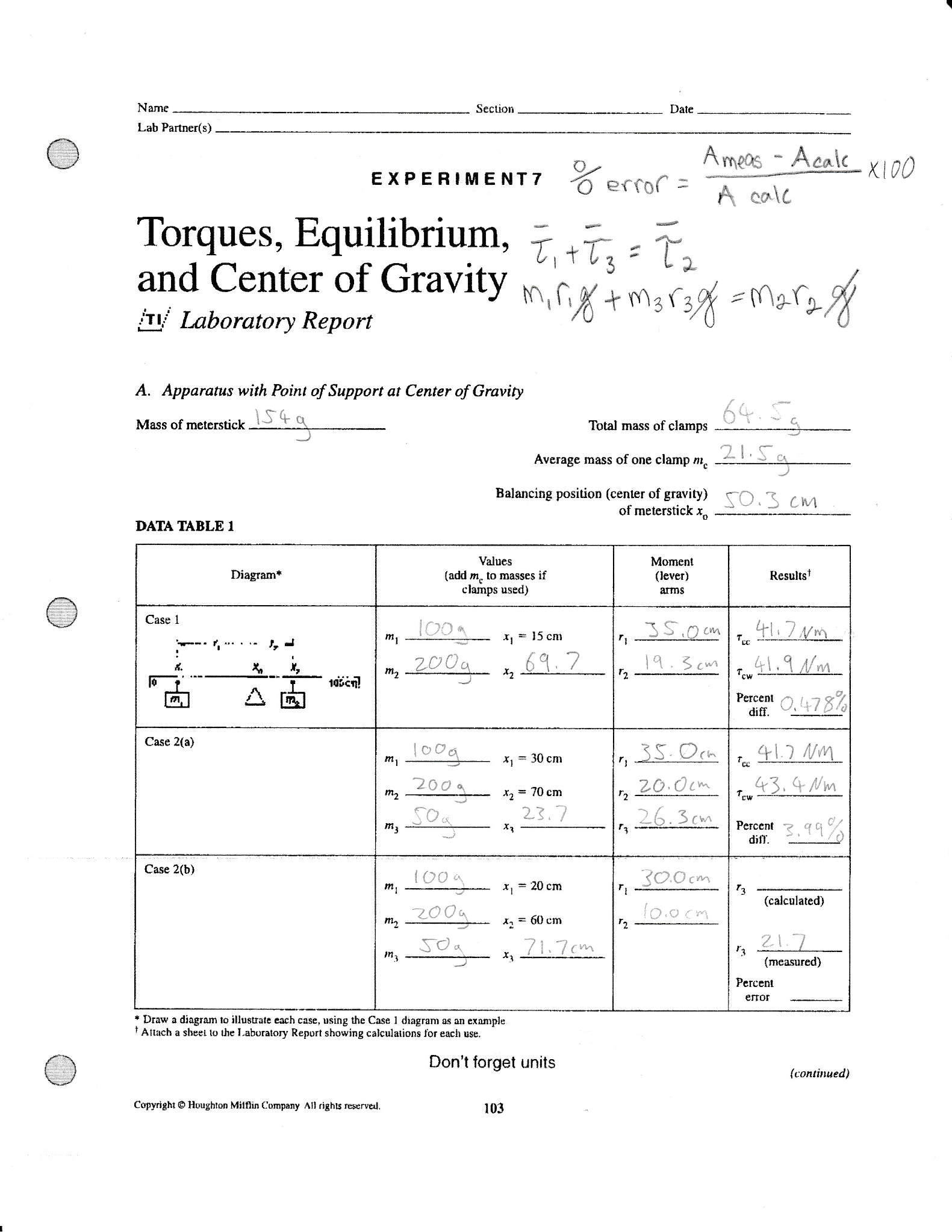

The figure shows a diagram of an arm bent at about 90°. You will need to use the concepts of center of gravity, torque, and rotational equilibrium. The heavier person will have to sit closer to the pivot. review sections 8.1 to 8.4 of your text before coming to the lab. Leave the hanger at the center of gravity of the meterstick. their weights labelled as $W_$ for the see-saw to be balanced. The primary purpose of this lab is to introduce you to the quantity called the torque or.Since the two persons have different weights, varying the perpendicular distances to the pivot is the only way for the clockwise and anti-clockwise moment to be equal.Ĭonsider that the two persons are labelled as 1 and 2, with: Begin the experiment by measuring the dimensions of the quadrant vertical endface ( B and D) and the distances ( H and L ), and then perform the experiment by taking the following steps: Wipe the quadrant with a wet rag to remove surface tension and prevent air bubbles from forming. Sum of clockwise torques = sum of anti-clockwise torquesįor the see-saw to be balanced, the see-saw must be in rotational equilibrium – which mandates that the clockwise moment about the pivot be equal to the anti-clockwise moment about the same pivot.

The principle of moments states that for a body to be in rotational equilibrium, the sum of clockwise torques about any point (which acts as a pivot) must equal to the sum of anti-clockwise torques about the same point. Rotational equilibrium is obtained when the algebraic sum of the torques is zero. Rotational Equilibrium (Principle Of Moments)

Translational equilibrium is obtained when the resultant force or vector sum of all forces acting upon the rigid body is zero. A rigid body is considered to be in equilibrium, if there is:Ī body in equilibrium experiences NO acceleration and will remain in equilibrium indefinitely, UNLESS it is disturbed by an external force. ( Newton’s First Law) Translational Equilibrium


 0 kommentar(er)
0 kommentar(er)
